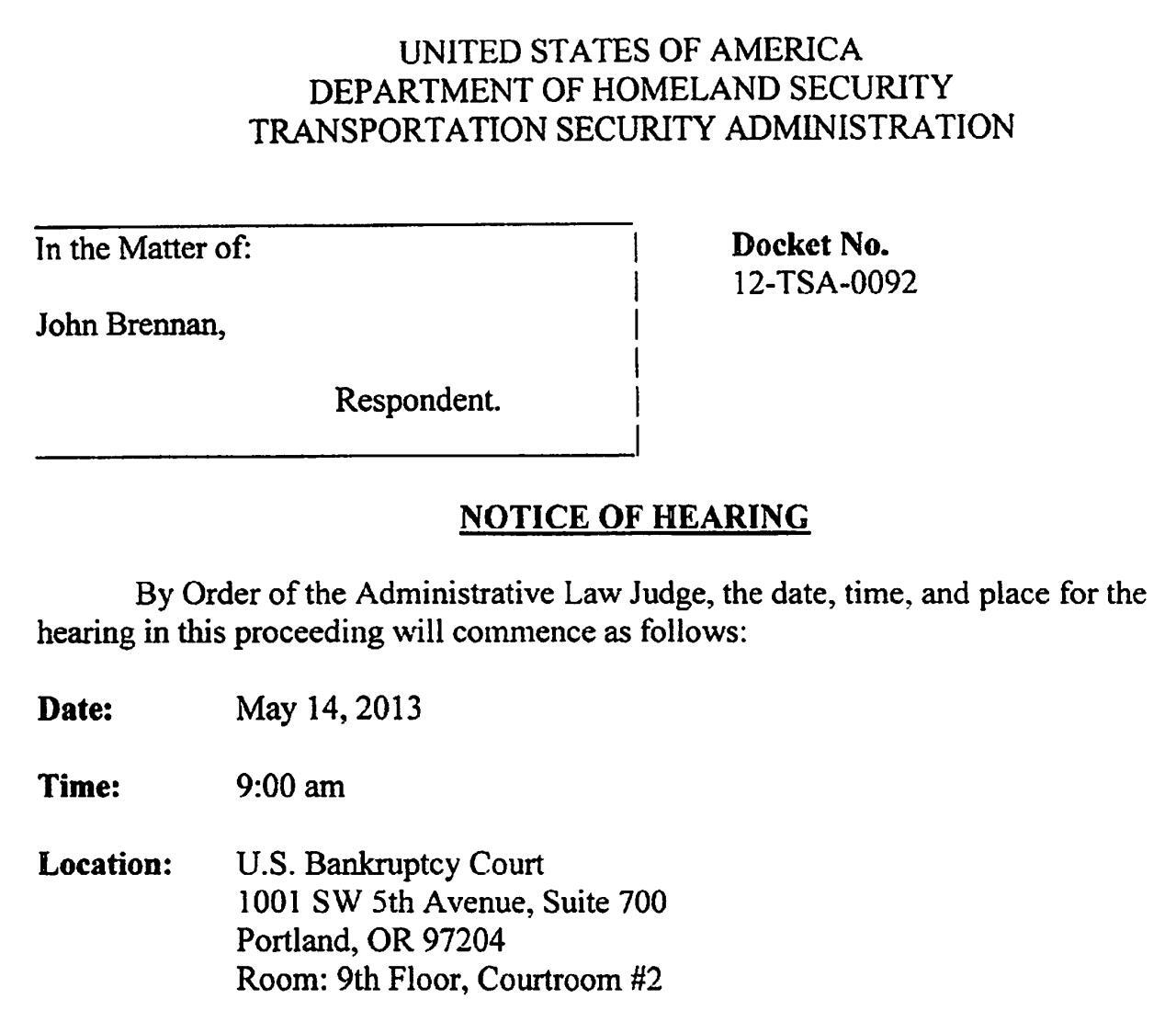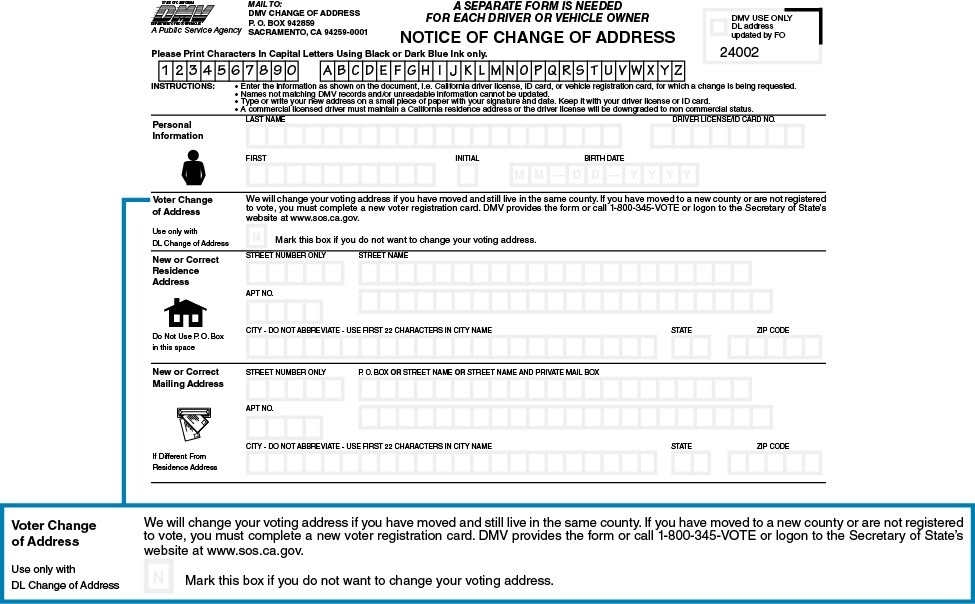Unveiling the often-overlooked advantages of meditation, this guide explores the subtle yet profound benefits that arise from consistent practice. We’ll delve into the nuances of recognizing these changes, equipping you with practical strategies and insights to appreciate the positive impacts on your well-being.
This exploration delves into the subtle shifts in mood, behavior, and awareness that meditation fosters. We’ll uncover the mechanisms behind these changes, empowering you to identify and cultivate these subtle improvements in your daily life. Understanding these changes will enrich your experience and allow you to harness the full potential of meditation.
Introduction to Subtle Benefits
Meditation, often associated with profound tranquility and heightened awareness, offers more than meets the eye. Beyond the readily apparent benefits like stress reduction and improved focus, lies a realm of subtle advantages that subtly enhance various aspects of life. These nuances often go unnoticed, yet they contribute significantly to a richer, more fulfilling experience.Subtle benefits in the context of meditation refer to those improvements in well-being that are not immediately obvious but manifest over time through consistent practice.
They are often subtle shifts in perception, emotional regulation, or cognitive function, which, though seemingly minor, accumulate to produce significant positive changes in one’s overall quality of life.
Examples of Subtle Benefits
Understanding subtle benefits requires recognizing the nuanced changes they bring. Consistent meditation practice can subtly shift one’s perspective, leading to a more profound appreciation for life’s experiences. This is not about a sudden revelation, but a gradual evolution of awareness.
| Benefit | Brief Description | Example Scenario |
|---|---|---|
| Enhanced Emotional Regulation | Meditation cultivates the ability to observe and respond to emotions with greater composure and awareness, rather than being overwhelmed by them. | A person experiencing a frustrating situation at work might notice the rising anger, acknowledge it without judgment, and choose a more constructive response. |
| Improved Self-Awareness | Meditation fosters a deeper understanding of one’s thoughts, feelings, and motivations. | A student might notice recurring negative thought patterns that affect their academic performance, leading to a strategy to reframe these thoughts. |
| Increased Patience and Tolerance | Through consistent practice, meditation promotes a more patient and understanding attitude towards oneself and others, leading to fewer reactions and more measured responses. | A parent dealing with a challenging child might notice their own rising frustration, acknowledge it, and choose to respond with greater patience and understanding. |
Recognizing the Subtle Shifts

Meditation’s impact often unfolds gradually, manifesting in subtle shifts in mood and behavior. These changes, while seemingly minor, can significantly enhance overall well-being and quality of life. By paying close attention to these subtle shifts, practitioners can gain a deeper understanding of meditation’s influence on their daily lives.
Subtle Changes in Mood and Behavior
Recognizing the nuanced effects of meditation requires a keen awareness of one’s inner state. This section details five subtle changes in mood or behavior that can be attributed to consistent meditation practice.
- Increased Patience and Tolerance: Meditation cultivates a greater capacity for patience and tolerance in various interactions. Individuals may find themselves responding to frustrating situations with more composure and understanding, rather than immediate reactivity. This can manifest in daily life through better handling of traffic delays, more understanding communication with loved ones, or a greater ability to withstand pressure at work.
A greater acceptance of oneself and others may be a significant factor in this change.
- Enhanced Emotional Regulation: Meditation practice fosters a deeper understanding of emotional responses. Individuals may experience a greater awareness of their emotional triggers and a more deliberate approach to managing them. This often leads to fewer emotional outbursts and a more balanced emotional landscape. This can be observed in everyday situations, such as managing stress during a challenging project or navigating disagreements with grace and empathy.
Greater self-awareness is a key factor in this improved emotional regulation.
- Improved Focus and Concentration: Regular meditation practice enhances focus and concentration. Individuals may find themselves more attentive during tasks, less easily distracted, and more capable of sustaining focus for extended periods. This translates to improved productivity at work or school, greater engagement in hobbies, and enhanced ability to concentrate on conversations and tasks. Improved focus is often linked to the ability to detach from distracting thoughts and emotions.
- Greater Sense of Calm and Peace: Meditation often leads to a more pervasive sense of calm and inner peace. This translates into a more relaxed demeanor and a greater sense of contentment, even during stressful situations. This can be noted in daily life through a more composed attitude, a quieter inner dialogue, and a greater appreciation for the present moment. This sense of inner peace is often linked to a reduction in anxiety and stress.
- Increased Self-Awareness: Meditation cultivates a heightened awareness of one’s thoughts, feelings, and motivations. Individuals may gain a clearer understanding of their own needs and desires, enabling them to make more conscious and intentional choices in their lives. This manifests in greater clarity in decision-making, more authenticity in interactions, and a greater understanding of personal motivations. Increased self-awareness is a significant contributor to this improved emotional regulation.
Tracking Subtle Changes
Documenting these subtle changes is crucial for understanding the long-term impact of meditation. A structured approach can help you track and analyze the patterns of these changes.
| Change | Observation | Frequency | Impact |
|---|---|---|---|
| Increased Patience | Responding calmly to frustrating situations | Daily (in specific instances) | Reduced stress, improved relationships |
| Enhanced Emotional Regulation | Fewer emotional outbursts, more balanced emotional responses | Weekly (track instances) | Improved interpersonal relationships, reduced anxiety |
| Improved Focus | Sustained attention during tasks, reduced distractions | Daily (note instances) | Increased productivity, enhanced efficiency |
| Greater Sense of Calm | Relaxed demeanor, inner peace | Weekly (track instances) | Reduced stress, improved overall well-being |
| Increased Self-Awareness | Clearer understanding of thoughts and feelings, more intentional choices | Weekly (reflect on decisions) | Improved decision-making, enhanced authenticity |
Cultivating Awareness of Subtleties

Cultivating heightened awareness is a crucial aspect of recognizing the subtle benefits of meditation. It involves developing a deeper sensitivity to the nuanced changes occurring within the mind and body. This enhanced perception allows practitioners to discern the often-unseen positive impacts of their practice. By training the mind to observe subtle shifts, practitioners can gain a more profound understanding of the transformative power of meditation.Recognizing subtle shifts requires a dedicated effort to cultivate heightened awareness.
This awareness is not innate; it is a skill that can be developed through consistent practice. The key lies in cultivating mindfulness, a state of focused attention on the present moment without judgment. Mindfulness acts as a lens, allowing practitioners to perceive the subtle shifts in their emotional responses, physical sensations, and mental processes.
Mindfulness in Emotional Responses
Mindfulness fosters an ability to observe emotional responses without getting swept away by them. This detached observation allows for a greater understanding of emotional triggers and patterns. For example, noticing a slight tightening of the jaw or a subtle change in breathing pattern can signal the onset of stress. Recognizing these early indicators allows for proactive management rather than reactive responses.
Focusing on Subtle Physical Sensations
Developing awareness of subtle physical sensations involves training the attention to notice the nuances of bodily experience. This might include observing the gentle rise and fall of the chest during breathing, the subtle warmth radiating from the hands, or the subtle pressure of clothing against the skin. By directing attention to these sensations, practitioners can become more attuned to the subtle messages their bodies send.
This enhanced awareness can lead to a deeper understanding of physical well-being and potential health issues.
Non-Judgmental Observation
A crucial element in cultivating awareness of subtleties is non-judgmental observation. This means acknowledging and accepting the presence of thoughts, feelings, and sensations without evaluating them as good or bad, desirable or undesirable. This detached perspective allows for a clearer understanding of the present moment without the distortions of judgment. The act of observation itself becomes the focus, rather than the content being observed.
Meditation Types for Enhanced Awareness
Various meditation practices can enhance awareness of subtle benefits. Consistent practice across different types can lead to a more comprehensive understanding of the self.
- Mindfulness Meditation: This type of meditation involves focusing on the present moment, observing thoughts and feelings without judgment. Practicing mindfulness meditation cultivates a deep awareness of the subtle shifts in the mind and body.
- Body Scan Meditation: This involves systematically bringing awareness to different parts of the body, noticing any sensations, tension, or relaxation. By paying attention to the subtle physical sensations, practitioners develop a heightened awareness of their physical state.
- Loving-Kindness Meditation: This practice involves cultivating feelings of compassion and kindness towards oneself and others. It can foster emotional awareness and understanding of subtle shifts in emotional responses, promoting empathy and understanding.
- Walking Meditation: This meditation practice involves paying attention to the physical sensations of walking, such as the contact of the feet with the ground, the movement of the body, and the awareness of the surroundings. It cultivates a deeper connection with the present moment and subtle physical sensations.
Understanding the Mechanisms
Meditation’s subtle benefits stem from profound changes occurring within the brain and mind. These changes, often imperceptible in the short term, contribute to lasting improvements in well-being and resilience. Understanding the underlying mechanisms offers a deeper appreciation for the transformative power of consistent practice.The neurological and psychological underpinnings of meditation’s effects are increasingly well-documented, revealing a complex interplay of factors.
Changes in brain structure and function, coupled with alterations in psychological processes, contribute to the development of subtle yet significant benefits.
Neurological Mechanisms
Meditation practices, through repeated engagement, lead to alterations in brain activity. These alterations manifest in various regions, influencing cognitive functions and emotional regulation. Studies using neuroimaging techniques, such as fMRI and EEG, have shown measurable changes in brain activity associated with meditation, including increased activity in regions linked to attention, emotional regulation, and self-awareness.
Psychological Mechanisms
Meditation fosters changes in psychological processes, impacting thoughts, emotions, and behaviors. These changes can contribute to a greater sense of inner peace, emotional stability, and improved coping mechanisms. Research indicates a correlation between meditation and reduced stress responses, improved emotional regulation, and enhanced self-awareness.
Research Findings
Numerous studies support the connection between meditation and subtle changes in well-being. One notable example involves studies on mindfulness meditation, which demonstrates its effectiveness in reducing symptoms of anxiety and depression. Similarly, research on loving-kindness meditation shows promising results in cultivating feelings of compassion and empathy.
Comparison of Meditation Schools
Different schools of meditation, while sharing some common ground, employ distinct techniques and target various aspects of mental and emotional well-being. Mindfulness meditation, for example, emphasizes present-moment awareness, often leading to improved focus and stress reduction. Transcendental Meditation, on the other hand, focuses on a specific technique to induce a state of deep rest, potentially impacting stress response and overall well-being.
Each approach can yield subtle benefits, but the specific outcomes may differ based on the individual and the chosen practice.
Neuroplasticity and Subtle Benefits
Neuroplasticity, the brain’s ability to reorganize itself by forming new neural connections throughout life, plays a crucial role in the development of subtle benefits from meditation. Consistent meditation practice can promote the formation of new neural pathways, strengthening those associated with positive emotional regulation and stress reduction. This process, while gradual, can lead to lasting changes in cognitive function and emotional well-being.
The repeated activation of specific neural circuits through meditation reinforces these circuits, contributing to a more stable and resilient mental state. This is a key aspect of how meditation’s subtle benefits manifest over time.
Practical Strategies for Identifying Subtle Benefits
Identifying the subtle benefits of meditation often requires a shift in perspective. It’s not about dramatic transformations, but rather about recognizing the small, positive changes in daily experience. These changes, while seemingly minor, can significantly contribute to overall well-being and personal growth. This section provides practical strategies to help you pinpoint these often-overlooked improvements.
Simple Exercise for Self-Reflection
To begin identifying subtle benefits, engage in a daily self-reflection exercise. Choose a specific aspect of your well-being, such as stress levels, focus, or emotional regulation. Before and after your meditation practice, take a moment to assess this area. Use a simple rating scale (e.g., 1-5, with 1 being low and 5 being high) to quantify your experience.
Note any specific thoughts or feelings associated with the rating. This regular practice helps you build a baseline and observe subtle shifts over time.
Strategies for Reflecting on Daily Experiences
Regularly reflecting on your daily experiences can reveal subtle improvements. Keep a journal or use a digital note-taking app. Note any moments where you feel more patient, focused, or emotionally balanced. Describe the situation and your response. Consider how your actions or reactions may have been different compared to previous days.
This active observation cultivates awareness of subtle shifts in your emotional and mental landscape.
Checklist for Tracking Personal Observations
Tracking your observations helps quantify the subtle benefits. A simple checklist can guide this process. Consider including items like:
- Stress Levels: Rate stress before and after meditation on a scale of 1-5.
- Focus and Concentration: Note instances where you felt more focused during tasks.
- Emotional Regulation: Describe situations where you experienced more emotional balance or resilience.
- Patience and Tolerance: Record instances where you exhibited increased patience or tolerance.
- Mindfulness: Note instances where you were more present and aware of your surroundings and feelings.
This structured approach helps organize your observations and provides a clear picture of evolving patterns.
Actionable Steps for Incorporating Strategies into Daily Life
Incorporating these strategies into daily life is crucial for continuous growth. Begin by setting aside a specific time for meditation each day. Consistency is key. Make reflecting on your experiences a routine part of your evening or morning. Use the checklist to guide your observations.
Regularly review your notes to identify patterns and correlations between meditation practice and improvements in well-being. This continuous monitoring empowers you to connect your efforts with the positive outcomes.
Table of Strategies
| Strategy | Description |
|---|---|
| Daily Self-Reflection | Assess a specific aspect of well-being before and after meditation, using a rating scale. |
| Reflection on Daily Experiences | Keep a journal or use a digital tool to record moments of increased patience, focus, or emotional balance. |
| Checklist for Tracking Observations | Use a structured checklist to quantify and categorize improvements in stress, focus, emotional regulation, and mindfulness. |
| Incorporating Strategies into Daily Life | Establish a consistent meditation routine, integrate reflection into your daily schedule, and regularly review notes for patterns. |
Addressing Potential Challenges
Recognizing the subtle benefits of meditation requires patience and a willingness to persist, even when immediate results are elusive. This section explores common obstacles to recognizing these benefits and provides strategies for navigating them effectively. Understanding these potential roadblocks empowers practitioners to maintain motivation and commitment throughout their meditation journey.Many individuals encounter challenges in recognizing subtle shifts, often due to preconceived notions or expectations.
These obstacles can significantly impact the experience and impede progress. Overcoming these challenges involves understanding the nature of subtle change and fostering a supportive approach to practice.
Common Obstacles to Recognizing Subtle Benefits
Obstacles to recognizing subtle benefits often stem from internal factors, including impatience, skepticism, and a lack of awareness. These internal barriers can lead to frustration and discouragement, potentially hindering progress.
- Impatience: Expecting immediate and dramatic transformations can lead to disappointment when subtle changes occur gradually. This impatience can undermine motivation and discourage continued practice.
- Skepticism: Some individuals may approach meditation with skepticism, doubting its efficacy or the possibility of experiencing subtle benefits. This skepticism can prevent them from fully engaging with the practice and noticing the subtle changes.
- Lack of Awareness: Without a conscious effort to observe and reflect on the practice, individuals may miss the subtle shifts in their thoughts, emotions, and overall well-being. Cultivating mindfulness and self-observation is crucial for recognizing these subtle benefits.
Strategies for Overcoming Challenges
Addressing these obstacles requires a proactive approach. Strategies for overcoming these challenges include a shift in perspective, conscious effort, and maintaining a consistent practice.
- Cultivating Patience: Recognizing that change takes time is crucial. Focusing on the process of meditation, rather than solely on the outcome, fosters patience and allows for the appreciation of gradual improvements. Meditation is a journey, not a destination.
- Challenging Skepticism: Engaging in self-reflection and journaling can help to identify and challenge negative beliefs about the effectiveness of meditation. Observing personal experiences and the experiences of others can foster a more open and receptive mindset.
- Developing Mindfulness: Regularly practicing mindfulness techniques, like body scans and focused attention, enhances awareness of subtle internal changes. By paying close attention to the present moment, individuals can better recognize the subtle shifts that occur during and after meditation.
The Importance of Patience and Consistency
Patience and consistency are fundamental to a successful meditation practice. They are not merely helpful but are essential components of the process. Consistent practice, combined with patience, allows for the gradual emergence of subtle benefits.
“Consistency in practice is more important than intensity in the short term. The cumulative effect of regular practice over time leads to profound changes.”
Consistent practice and patience are crucial in observing subtle changes. Consistent practice builds resilience and allows individuals to adapt to the challenges they may face. The gradual nature of change allows the individual to stay motivated and committed to their practice.
Maintaining Motivation When Subtle Changes are Not Immediately Noticeable
Maintaining motivation when subtle changes are not immediately noticeable requires a shift in focus. Focusing on the process rather than the outcome can sustain motivation and commitment.
- Focusing on the Process: Instead of solely concentrating on the desired outcomes, focus on the process of meditation itself. Appreciate the practice as a journey of self-discovery and personal growth, regardless of immediate results.
- Setting Realistic Goals: Establish realistic expectations and goals for the practice. Avoid setting unrealistic timelines for achieving significant results, which can lead to discouragement. Focusing on small, achievable goals helps maintain a positive outlook.
- Seeking Support: Connecting with other meditators, joining a meditation group, or seeking guidance from a meditation teacher can provide valuable support and motivation. Sharing experiences and learning from others can foster a sense of community and encourage continued practice.
Illustrative Examples

Observing the subtle benefits of meditation often requires a shift in perspective, moving beyond the immediate to appreciate the nuanced changes within. These changes, though imperceptible at first, can accumulate over time, leading to significant improvements in overall well-being. Real-life stories provide compelling evidence of how meditation can positively impact individuals.
Real-Life Accounts of Subtle Benefits
The following accounts highlight the diverse ways individuals experience subtle benefits from meditation. These are not isolated instances; rather, they represent patterns observed in numerous meditation practitioners. They illustrate how subtle shifts in attention, emotional regulation, and cognitive function can manifest in everyday life.
- Amelia, a busy professional, noticed a subtle shift in her ability to manage stress. Initially, minor deadlines or unexpected interruptions would trigger significant anxiety. Through consistent meditation practice, she observed that these triggers still arose but were met with a calmer response. Her frustration levels decreased, and she found herself more adaptable to unexpected changes in her schedule. She attributed this improvement to increased self-awareness cultivated through meditation, enabling her to react with more measured responses.
- David, a student struggling with exam anxiety, discovered that meditation helped him focus during study sessions. Initially, his mind wandered frequently, making it difficult to concentrate on complex material. Through daily meditation, he noticed his ability to maintain focus for longer periods. This improved focus, in turn, enhanced his study efficiency and reduced the feeling of overwhelm. He found that meditation helped to anchor his attention, reducing the distracting thoughts that previously plagued him.
- Sarah, a creative writer, experienced increased clarity in her writing process. Initially, she struggled with writer’s block, finding it challenging to generate new ideas. Through meditation, she observed that her mind became more receptive to creative impulses. She found that the meditative state allowed her thoughts to flow more freely, leading to more innovative and insightful writing. This, in turn, increased her overall confidence in her creative abilities.
Detailed Experiences and Key Takeaways
The subtle benefits described in the previous examples demonstrate the multifaceted nature of meditation’s impact. These experiences underscore the importance of consistent practice and self-observation in recognizing these nuanced improvements.
| Individual | Experience | Key Takeaway |
|---|---|---|
| Amelia | Improved stress management; calmer reactions to interruptions and deadlines. | Meditation cultivates self-awareness, enabling more measured responses to stressors. |
| David | Enhanced focus during study sessions; reduced exam anxiety. | Meditation strengthens attention span, improving concentration and reducing mental clutter. |
| Sarah | Increased clarity and creativity in writing; overcoming writer’s block. | Meditation fosters a receptive mind, allowing creative ideas to flow more freely. |
Visualizing Subtle Changes

Meditation’s impact often manifests in subtle shifts in focus and awareness. These changes, while not immediately apparent, are significant indicators of the practice’s effectiveness. Recognizing these subtle benefits requires a keen awareness and a thoughtful approach to self-observation. The process of visualizing these changes can enhance understanding and provide a tangible link to the profound benefits of meditation.Visualizing these changes involves moving beyond simply feeling better to understandinghow* meditation is affecting the mind and body.
This process allows for a more comprehensive and personal understanding of the practice’s transformative potential.
Illustrative Image of Subtle Shifts
The image depicts a flowing stream of consciousness, initially turbulent and scattered. As meditation progresses, the stream gradually smooths out, becoming calmer and more focused. Small ripples, representing subtle thoughts and distractions, become less frequent and less intense. The overall impression is one of increasing serenity and clarity.
Neurological Pathways Representation
Visualizing the neurological pathways involved in meditation can provide insight into the underlying mechanisms of these subtle changes. A graphic representation might show interconnected brain regions like the prefrontal cortex, the amygdala, and the hippocampus. Arrows could illustrate the strengthening of neural connections related to attention, emotional regulation, and memory. A key point is the increased activity in regions associated with self-awareness and reduced activity in regions linked to stress and anxiety.
This visualization emphasizes the tangible changes in the brain’s structure and function during meditation.
Flowchart of Noticing Subtle Benefits
This flowchart demonstrates the process of noticing subtle benefits of meditation:
Start with regular meditation practice. Observe and record personal experiences, noting subtle shifts in focus and emotional responses. Evaluate your observations against previous experiences. Regularly monitor and analyze your findings, connecting them with specific moments in the meditation practice. If the pattern continues over a period of time, you may begin to notice subtle benefits.
Descriptive Image Evoking “Subtle” Benefits
A soft, warm light emanates from a closed eye, subtly illuminating a serene landscape. The landscape is filled with gentle hills, a quiet forest, and a peaceful stream. The light suggests a sense of inner peace and tranquility. This image symbolizes the subtle, yet profound, impact of meditation. The light represents inner awareness and the landscape symbolizes the clarity and calmness found within.
Last Recap

In conclusion, recognizing the subtle benefits of meditation requires conscious awareness and a commitment to consistent practice. By understanding the subtle shifts in your mood, behavior, and awareness, and applying the strategies Artikeld in this guide, you can begin to notice the positive impacts of meditation on your life. This journey encourages you to embrace the transformative power of mindfulness and the subtle, yet significant, improvements that meditation can bring to your overall well-being.